This town’s mining battle reveals the contentious path to a cleaner future
Minnesota's Highway 210 threads through the tiny towns of Aitkin County, a poor and sparsely populated stretch of forests, lakes, and wetlands that reaches just into the northeastern corner of the state.
A short drive off the highway, due south past the Tamarack Church, delivers you to Jackson's Hole, the last remaining business in the unincorporated community of Lawler.
A little before noon on a Tuesday in late June, several dozen people from across the region filed into the barn-red, century-old town store turned saloon. They settled into seats around folding tables in the rear banquet room, where deer horns and a bearskin rug adorn the walls.
At the front of the room, Jessica Johnson, the community and government relations director for Talon Metals, began her pitch. Clicking through slides on a screen, Johnson paused on a rendering of a roughly 60-acre site just north of neighboring Tamarack.
The screen displayed a planned project that would stretch across a homestead and tree farm that currently grows white and Norway pines. It would include an electrical substation, a wastewater treatment plant, and a rail spur cutting through wetlands to meet the tracks in the middle of town. At its heart would be a mine.
This is the first story in a two-part series exploring the hopes and fears surrounding a single mining proposal in a tiny Minnesota town. You can read the second part here.
Earlier that month, Talon, an exploratory mining company, had submitted a proposal to state regulators to begin digging up as much as 725,000 metric tons of raw ore per year, mainly to unlock the rich and lucrative reserves of high-grade nickel in the bedrock.
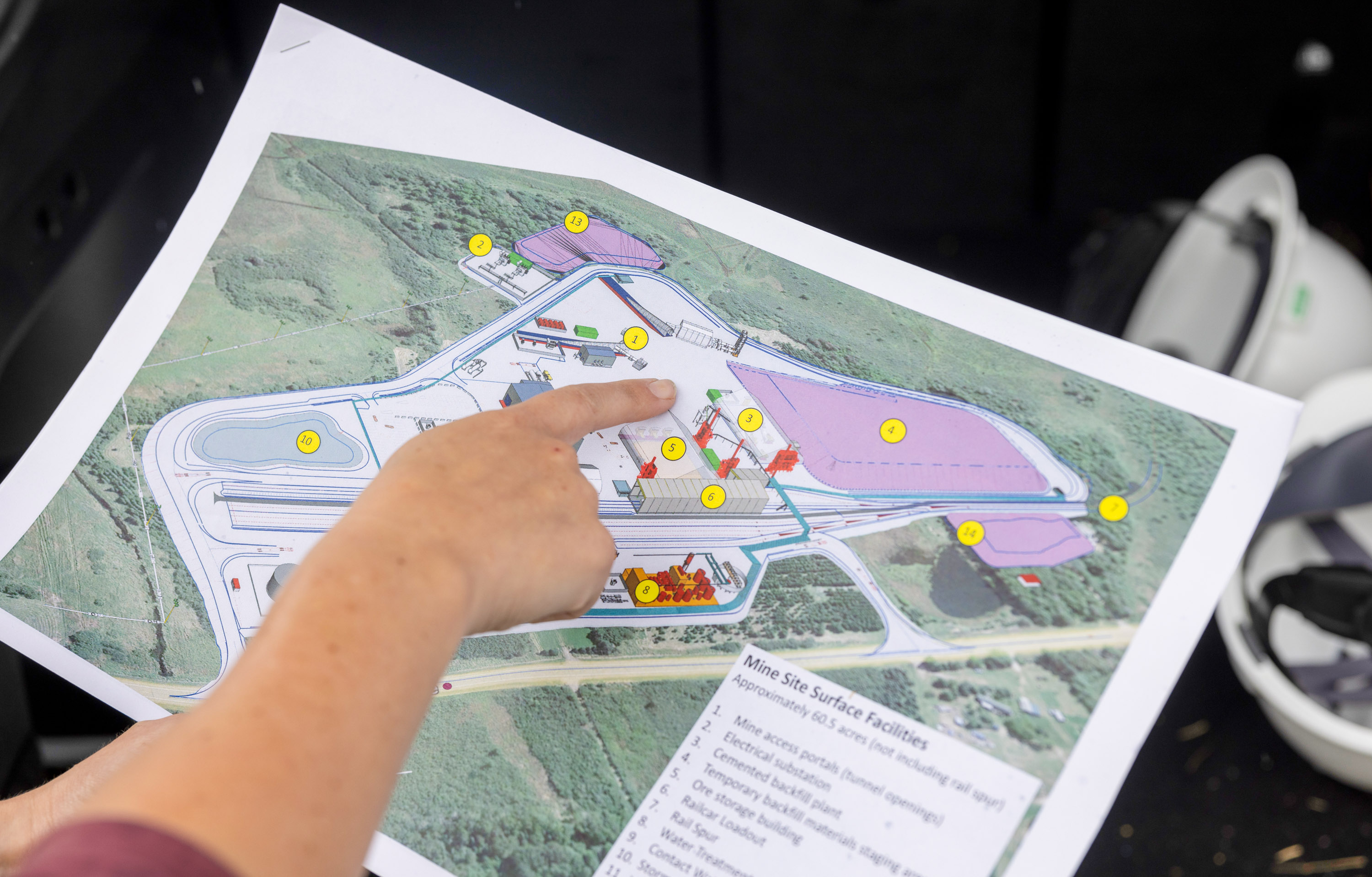 A map displays Talon's proposed nickel-mining site near Tamarack, Minnesota. ACKERMAN + GRUBER
A map displays Talon's proposed nickel-mining site near Tamarack, Minnesota. ACKERMAN + GRUBERBut Talon is striving to distance itself from the mining industry's dirty past, portraying its plan as a clean, friendly model of modern mineral extraction.
It proclaims the site will help to power a greener future for the US by producing the nickel needed to manufacture batteries for electric cars and trucks, but with low emissions and light environmental impacts. Talon is marketing the product as Green Nickel," a term it has applied to trademark-and it's already struck a deal to sell tens of thousands of tons of the metal from the Minnesota mine to the EV giant Tesla.
Something that our team, I think, very much believes in, just as a company, is that we don't have to choose between protecting the environment and gathering the minerals that we use as a resource," Johnson said to the gathered crowd. It shouldn't be a choice. And it doesn't have to be a choice."
But as the company has quickly discovered, a lot of local citizens aren't eager for major mining operations near their towns, even if the end product could help cut greenhouse-gas emissions and ease global warming. Mining proposals are the weak point where climate alliances will often fray, because blasting holes in the earth always comes at some environmental cost, and the impacts frequently fall harder on disadvantaged groups.
The deep community tensions provoked by the proposal were apparent at Jackson's Hole as soon as the question-and-answer period began. Attendees strained the Minnesota nice" stereotype, interrupting and talking over one another as they variously critiqued and defended the plan.
The room went quiet, however, as a woman with dark hair stood up and introduced herself, first in Ojibwemowin and then in English, as Jean Skinaway-Lawrence, the chairwoman of the Sandy Lake Band of Mississippi Chippewa. She said she fears the mine will threaten the band's rights, secured under various treaties that date back to the early 1800s, to fish, hunt, and harvest plants across parts of the Upper Midwest.
In particular, Skinaway-Lawrence worries that mineral dust from the mine will pollute surrounding water bodies and decimate a wild rice known as manoomin, which is central to the tribe's cuisine and culture.
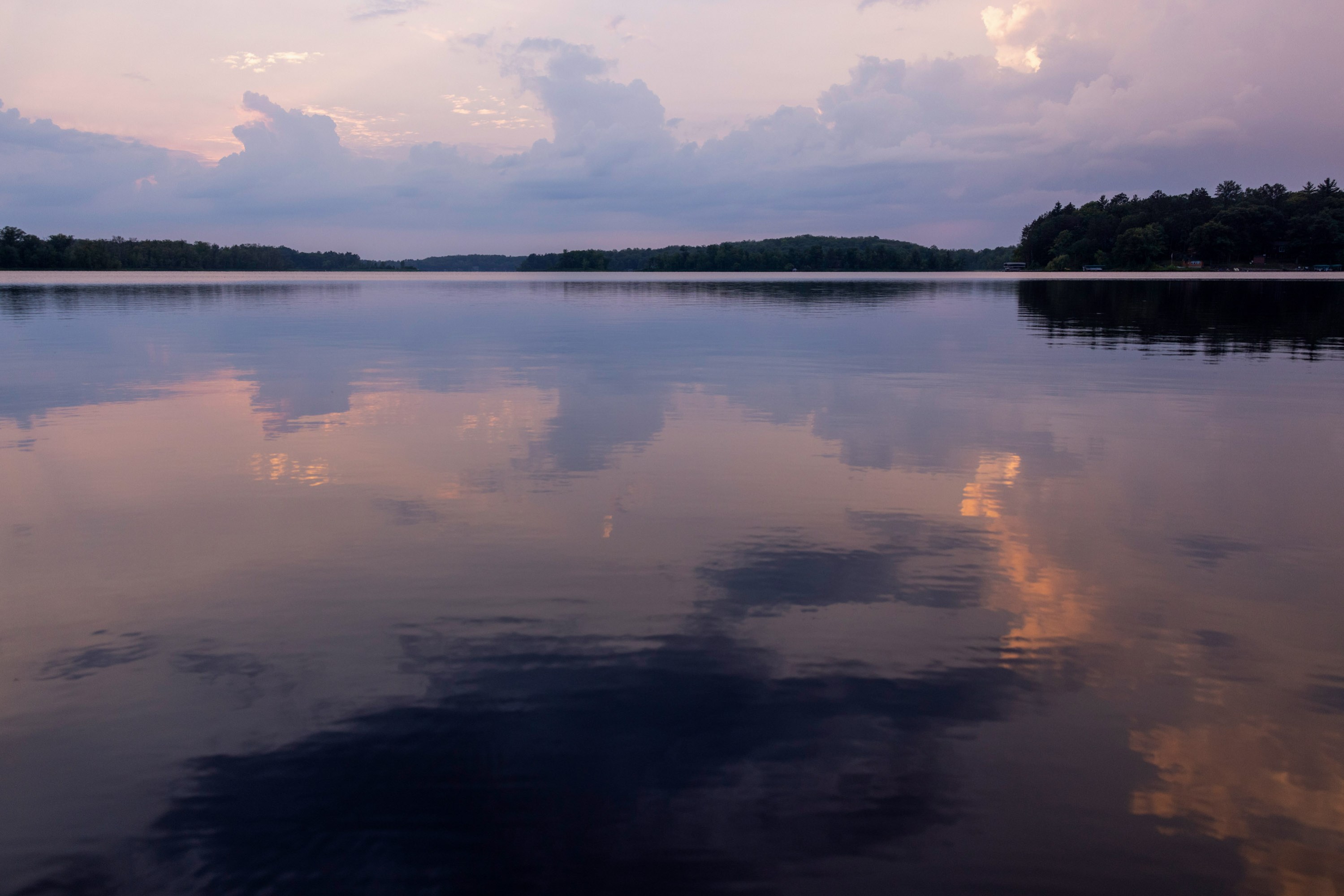 Big Sandy Lake is one of the many bodies of water close to the mining site that draw tourists and are culturally important to local Indigenous communities.ACKERMAN + GRUBER
Big Sandy Lake is one of the many bodies of water close to the mining site that draw tourists and are culturally important to local Indigenous communities.ACKERMAN + GRUBERMy blood is here at Sandy Lake," she said, referring to the band's namesake water body, located just north of Tamarack. I am descended from the original chiefs here. That's why I need to protect my lands, my manoomin, my culture, my history."
Skinaway-Lawrence agrees that the world should take action to slow climate change. But she argues that companies should recycle battery materials or extract the necessary metals from places where it doesn't endanger a plant her people have consumed for generations.
Elon Musk could have nickel anywhere else in the world," she said, calling out Tesla's chief executive. You can't have manoomin anywhere else but here."
The need for nickelThis is a local fight with high national and international stakes. As the US and other countries race to lock down access to the minerals needed to fuel the clean industrial revolution, and mining proposals proliferate, the tensions on display in Jackson's Hole are building in communities across America.
The US had been content to move more and more mining offshore since World War II, because of both the nation's voracious consumption of global resources and the sector's terrible environmental track record. But the energy transition has radically altered the geopolitical, economic, and ecological calculus.
Elon Musk could have nickel anywhere else in the world. You can't have manoomin anywhere else but here."
Studies show the world will need to dig up far more minerals to avoid the graver dangers of climate change. Recycling alone won't cut it. They're essential for batteries, EVs, wind turbines, solar panels, and other cleantech products required to shift the economy away from fossil fuels.
During the last few years, the US has enacted numerous policies designed in part to boost domestic production of critical minerals, most notably through the massive tax incentives and grants bundled into the Bipartisan Infrastructure Law and the Inflation Reduction Act. Politicians across parties have come to recognize that revitalizing these sectors is essential to ensure the nation's energy security, create middle-class jobs, and counter China's dominance of the materials needed to fuel the country's move to cleaner energy sources.
Nickel is particularly crucial for cleaning up the nation's auto sector, because it increases the energy density of lithium-ion batteries, extending the range of electric cars and making it possible for batteries to power heavier vehicles like trucks and semis. Yet there's only one dedicated nickel mine in America today. The US imports about eight times more of the metal than it produces.
The Biden administration has signaled clearly that it believes Talon's efforts are of strategic importance, agreeing to give the company nearly $21 million for further nickel exploration under the Defense Production Act and nearly $115 million through the infrastructure law to build a processing plant in neighboring North Dakota.
If the Minnesota mine is approved, the project could also help to unlock billions of dollars in Inflation Reduction Act tax credits throughout the nation's supply chain for batteries and electric vehicles, according to an analysis by Bentley Allan, co-director of the Net Zero Industrial Policy Lab at Johns Hopkins University, conducted in coordination with MIT Technology Review. (Please read our related story on that topic.)
Still, a number of nonprofits, legal organizations, and citizens are actively lobbying against the project. Some of those who want to stall or stop it have drawn hope from recent moves by state courts and federal regulators to halt similar mining proposals in northeastern Minnesota, including the Twin Metals and NorthMet projects, to protect precious waterways like the Boundary Waters Canoe Area Wilderness.
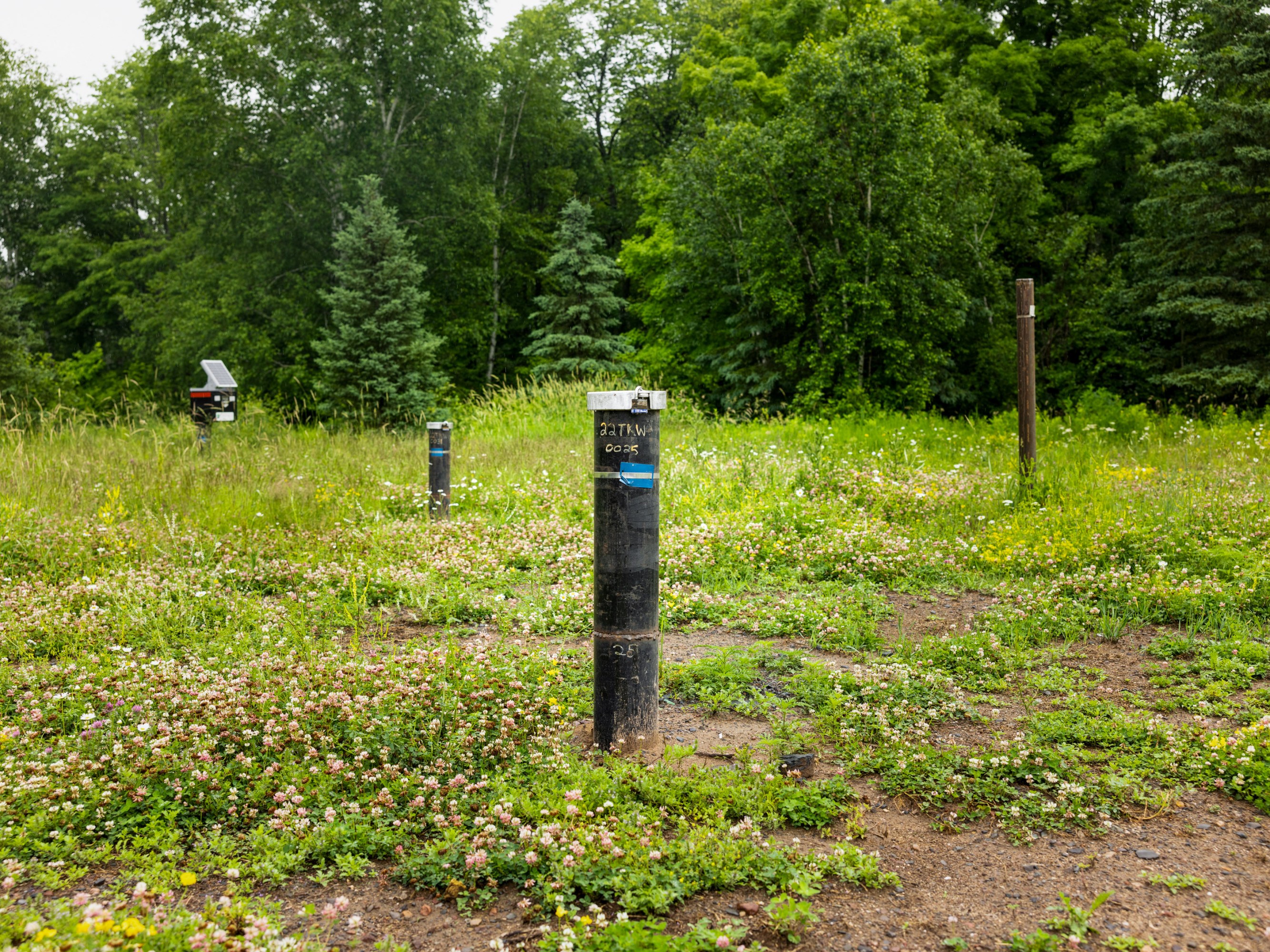 Talon has extracted rich nickel samples from the capped drill wells on a pine tree farm just north of town.ACKERMAN + GRUBER
Talon has extracted rich nickel samples from the capped drill wells on a pine tree farm just north of town.ACKERMAN + GRUBERCritics also fear that Talon's mine could pollute the region's water and air, and spoil the rural tranquility that draws tourists and seasonal residents to the area. Further, they scoff at Talon's climate claims and green" marketing, arguing that the company and its quiet partner, the controversial mining giant Rio Tinto, can't be trusted to follow through on their environmental assurances once they've landed their public approvals.
Leanna Goose, a member of the nearby Leech Lake Band of Ojibwe, says that dismissing Indigenous concerns and threatening tribal resources in the name of climate change amounts to an act of green colonialism."
The simmering tensions have made this rural stretch of the Upper Midwest a test case for how US communities will grapple with the inherent conflict between local environmental concerns and global climate goals, as companies pursue more and more cleantech projects.
As Talon sets off to secure the long list of state and local regulatory approvals needed to move forward with its proposal, many of the region's residents feel the project is forcing them to pick sides between starkly different futures: Fight to perfectly preserve the area's bucolic character and natural resources, or embrace its transformation into a hub of the emerging green economy.
The highest-grade rocks I've ever held"Tamarack, Minnesota, takes its name from the Algonquin word for the deciduous conifers that thrive in the thick bogs that spot the region, the remains of ancient glacial lakes.
It is less than four square miles, with a population that hovers around 70, about 36% of whom live below the poverty line. But the summertime population of the larger area swells as tourists and seasonal residents arrive to fish and float on the lakes.
Talon is officially headquartered in the British Virgin Islands, but it has established its US offices one block off of the town's central strip.
On a rainy June morning, I met Brian Goldner, the company's chief exploration and operations officer, in front of the company's core shed," a steel building with a roll-up garage door.
Goldner, whose graying lumberjack beard reaches the third button of his shirt, has studied the rocks underneath Tamarack since he was a graduate student at the University of Minnesota Duluth.
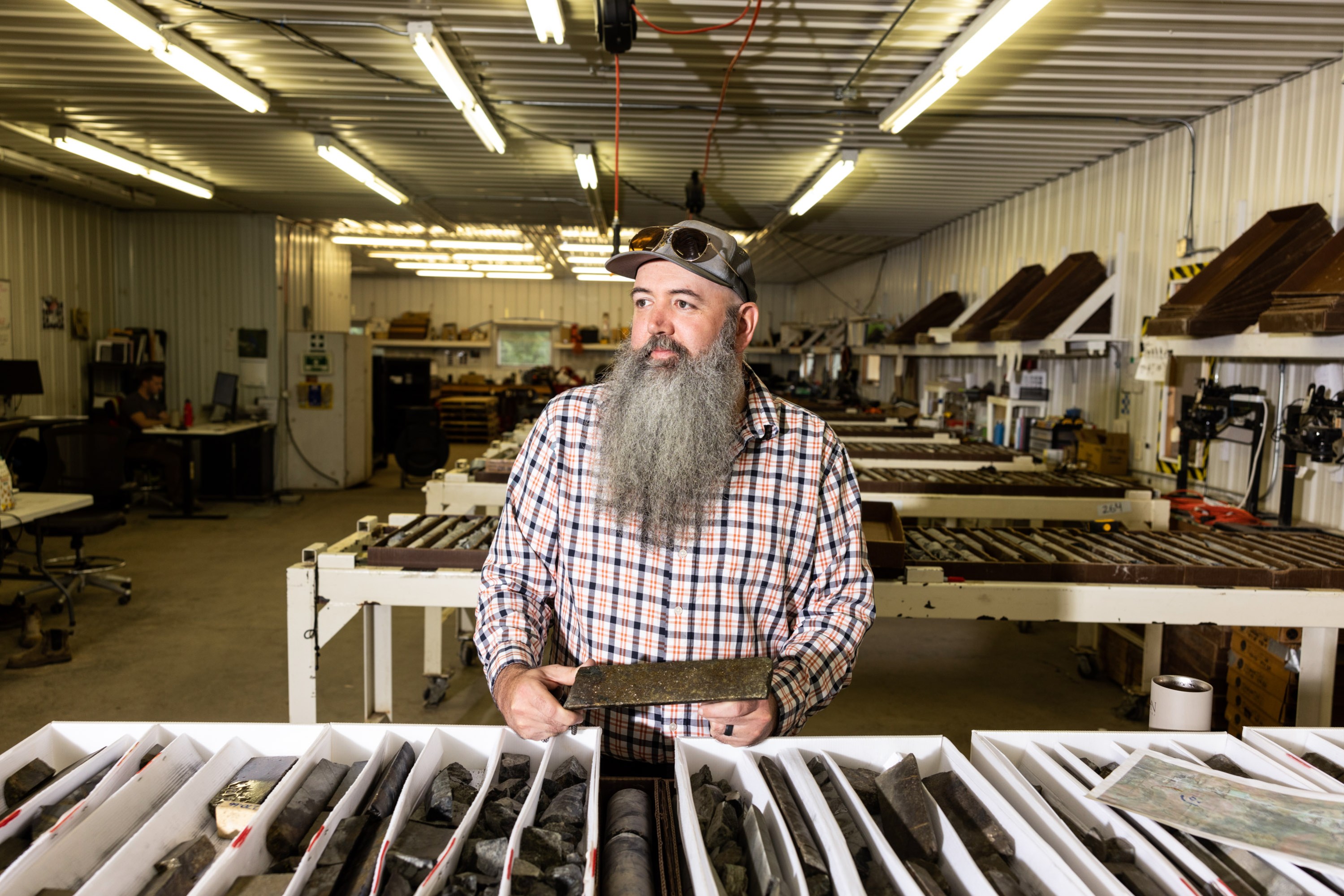 Brian Goldner, Talon's chief exploration and operations officer, holds one of the core samples in the company's logging shed.ACKERMAN + GRUBER
Brian Goldner, Talon's chief exploration and operations officer, holds one of the core samples in the company's logging shed.ACKERMAN + GRUBERThe deposits were formed about 1.1 billion years ago, as North America began to rip apart at a point known as the Midcontinent Rift. Those tectonic forces created an inchworm-shaped tear that arches up from Kansas to Ontario, then bends down to the southern edge of Michigan. Rift volcanoes burst through the thinning crust, pouring out lakes of basaltic lava hundreds to thousands of feet deep, packed with rich deposits of nickel, copper, and iron.
In the shed, Goldner stood between tables covered with trays of pipe-shaped samples of the bedrock, which formed as the magma cooled. He picked up a dark gray piece of ancient rock and turned it under the overhead light.
Everything that flashes when I move it around-that's pentlandite," he said. That's where the nickel is."
As Goldner walked alongside the row of trays, he covered hundreds of feet of additional depth in the origins of the samples. The density of the nickel in the ore, from one end of the table to the other, climbed from about 5% to 12%.
Pointing to the samples in the last tray, extracted from about 900 feet below the surface and about a mile and a half north from where he stood, Goldner said: These are the highest-grade rocks I've ever held."
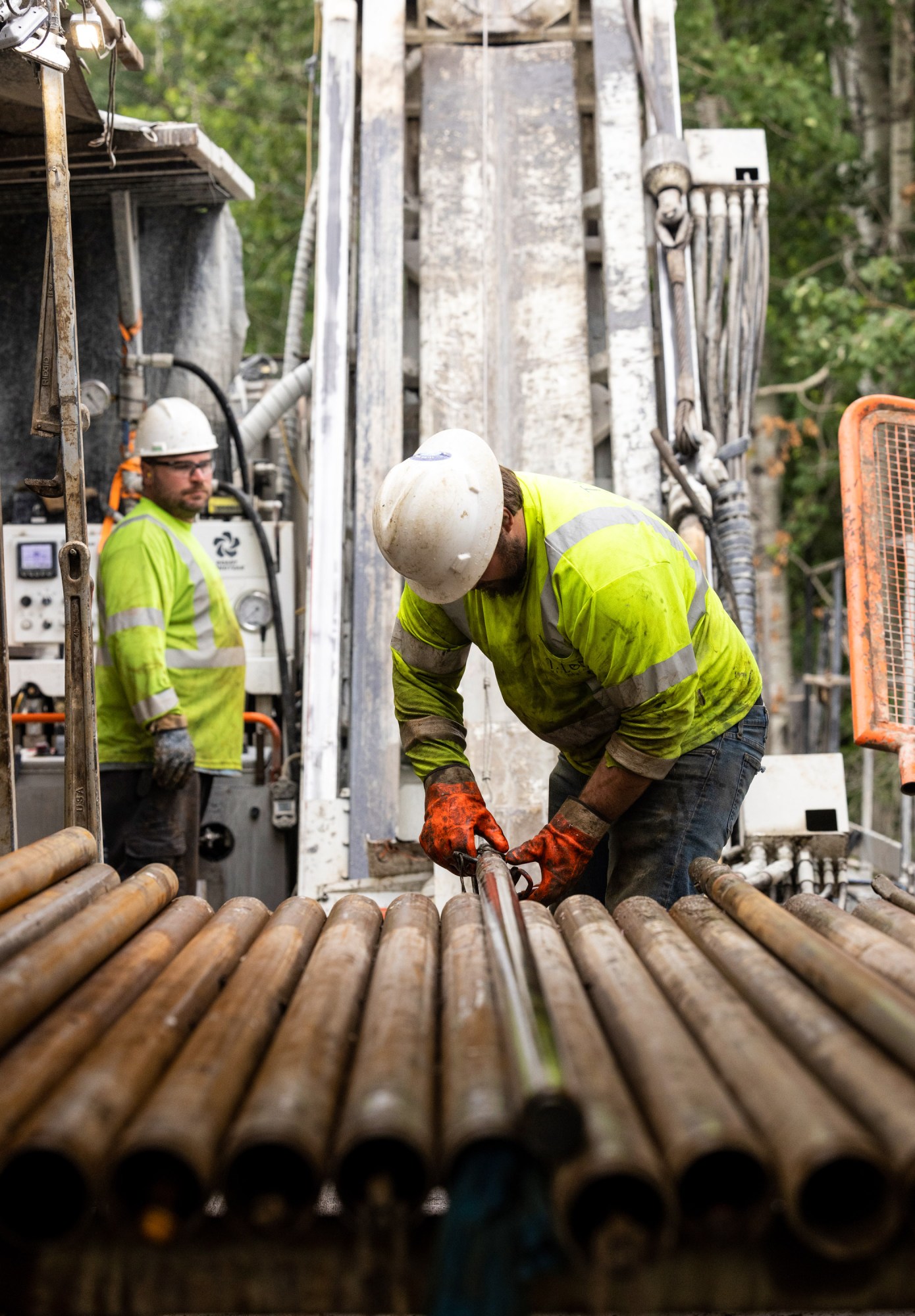
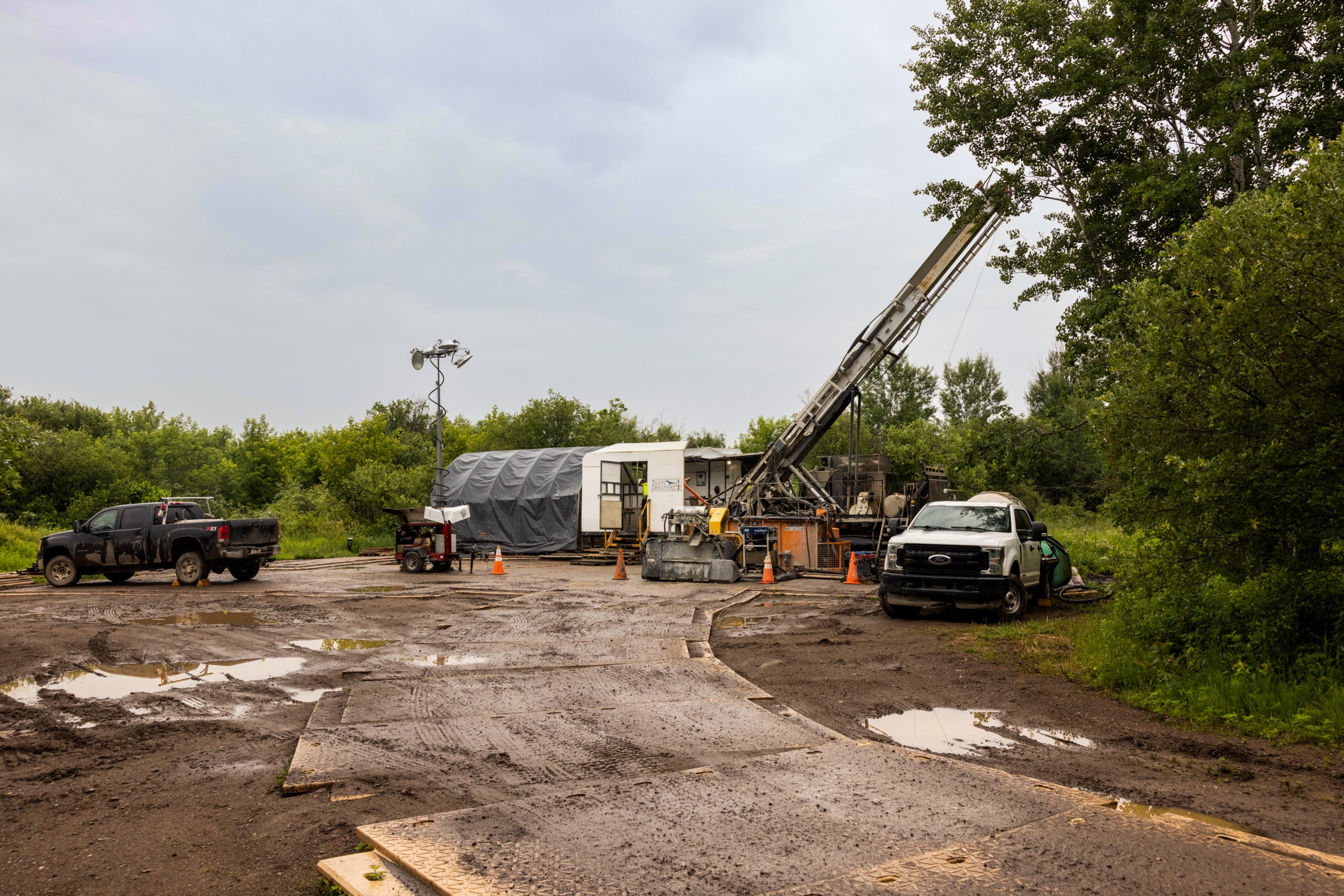
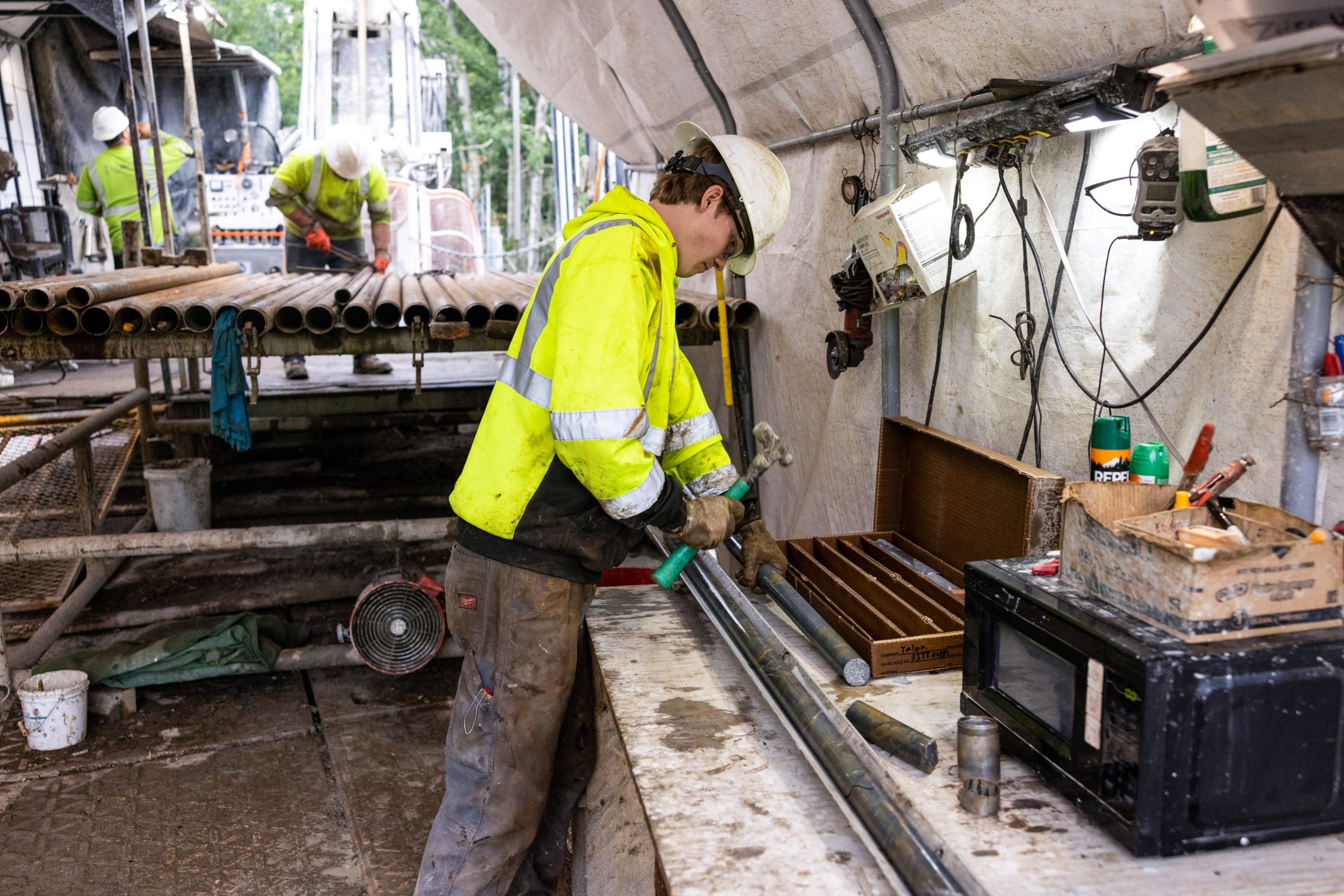
A crew of Talon workers stack up sections of drill pipe and log core samples for further inspection.
It was these rich reserves that drew Talon, which was previously focused on developing gold mines in Brazil, to this part of rural Minnesota. After reviewing the findings of Kennecott Exploration, a subsidiary of Rio Tinto that had been drilling at the site for more than a decade, it agreed to acquire a 30% stake for $37.5 million in 2014. Talon now owns 51% of the project.
The density of the nickel, copper, and iron at the site means that Talon can extract more metals from every ton of ore it pulls up from the ground. It also makes it cheaper, easier, and more profitable to process the metal to the purity levels required for the batteries that power EVs, says Todd Malan, the company's chief external affairs officer and head of climate strategy.
In addition, the geological makeup of the site means Talon's operations should have a much smaller climate footprint than major nickel mines in other parts of the world. Much of the world's nickel is extracted from shallow, diffuse deposits, through open-pit mining projects that often leave expansive scars, encroach on forests and farms, and contaminate waterways. They can produce around 18 times more greenhouse-gas emissions per ton of mined and processed metal than mining operations at a geological formation like the one in Minnesota, according to data from Skarn Associates, a mining sustainability research firm.
The potential here is to try and develop the United States' remarkable mineral wealth in a new and different way than we've done mining in the past," Malan says.
Talon intends to dig deep instead of wide. It plans to employ a train-car-size tunnel boring machine" equipped with a spinning cutterhead to excavate a tunnel about 350 feet down, through the glacial till, into the deep bedrock and back-laying down a watertight cement tube as it goes. From there, the company will switch to conventional drill-and-blast extraction techniques, filling drill holes with ammonium nitrate or other explosive mixtures to blow up and break deep rock.
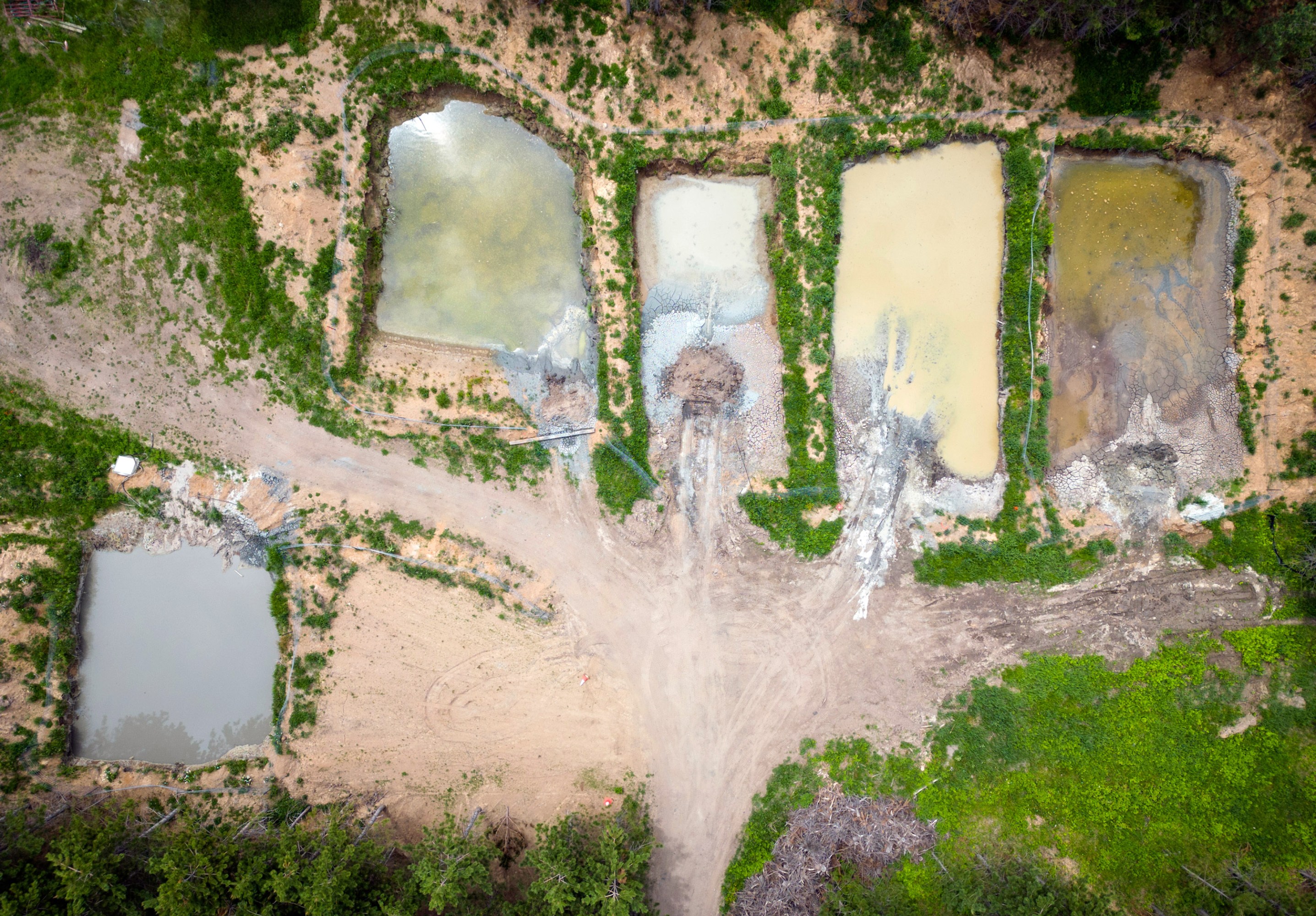 Cuttings from exploratory drilling are deposited into what are known as sumps" near the proposed mine.AP IMAGES
Cuttings from exploratory drilling are deposited into what are known as sumps" near the proposed mine.AP IMAGESThe process could release as much as 2.6 million gallons of water into the mine per day, mostly from aquifers disconnected from the region's fresh water sources, the company says. Talon plans to pump that water up to the surface, treat it through reverse osmosis or a similar process, and release it into the adjacent wetlands, where it would feed into Big Sandy Lake and eventually the Mississippi River.
It's this part of the plan that has spawned some of the biggest fears around the community, given the potential impacts on the fresh water bodies that define the region's topography and drive much of its economy.
Protecting the food that grows on waterShortly after the Jackson's Hole meeting, I met Kelly Applegate, commissioner of natural resources for the Mille Lacs Band of Ojibwe, at the entrance to Rice Lake National Wildlife Refuge, which is about a 20-minute drive from Tamarack.
The lake stretches across thousands of square acres, but it's only about two feet deep on average. Bright green stalks of wild rice rise from the surface, standing out against the darker grasses along the shoreline.
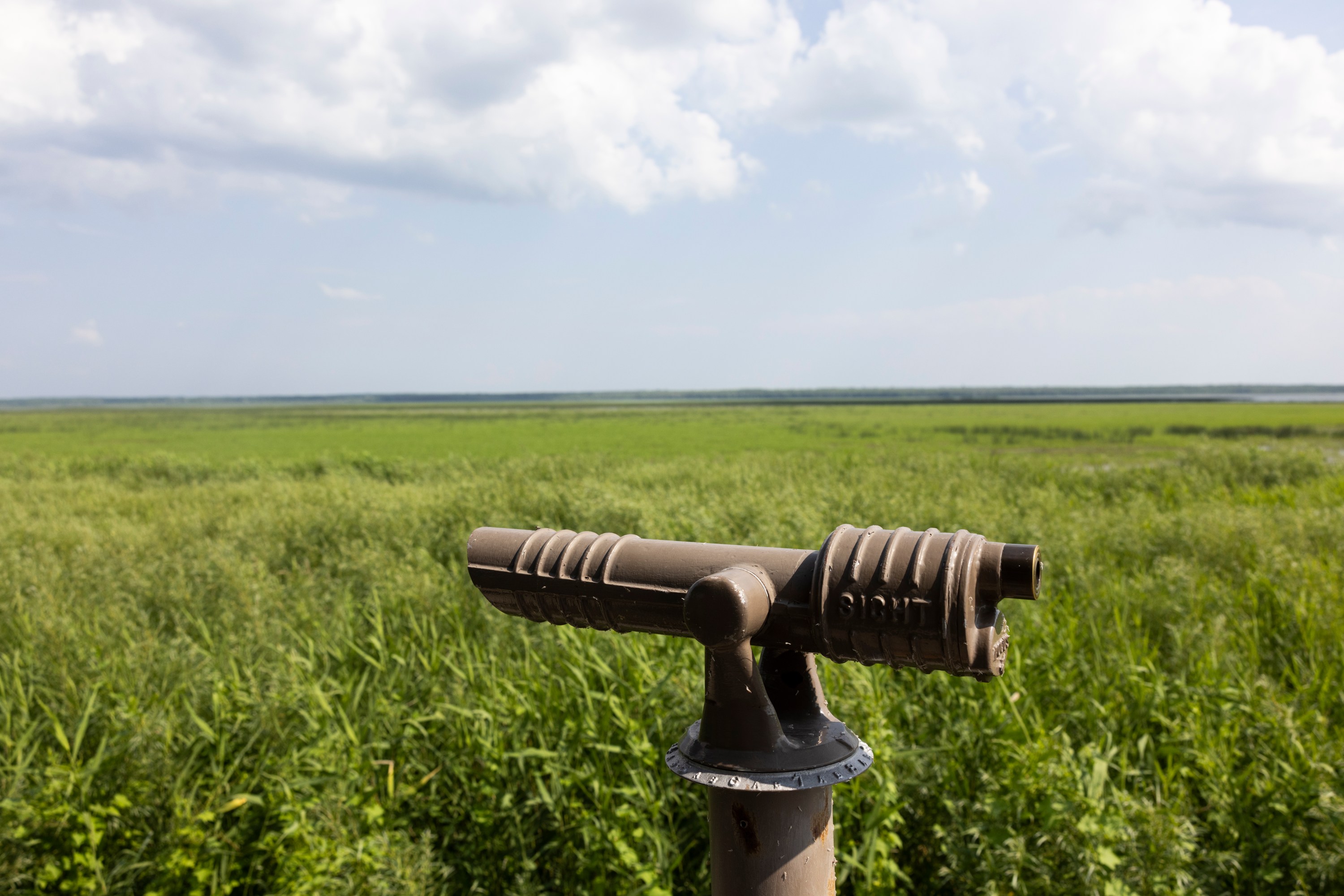 Tall grasses and a wild rice known as manoomin grow within the Rice Lake National Wildlife Refuge, which is about a 20-minute drive from Tamarack.ACKERMAN + GRUBER
Tall grasses and a wild rice known as manoomin grow within the Rice Lake National Wildlife Refuge, which is about a 20-minute drive from Tamarack.ACKERMAN + GRUBER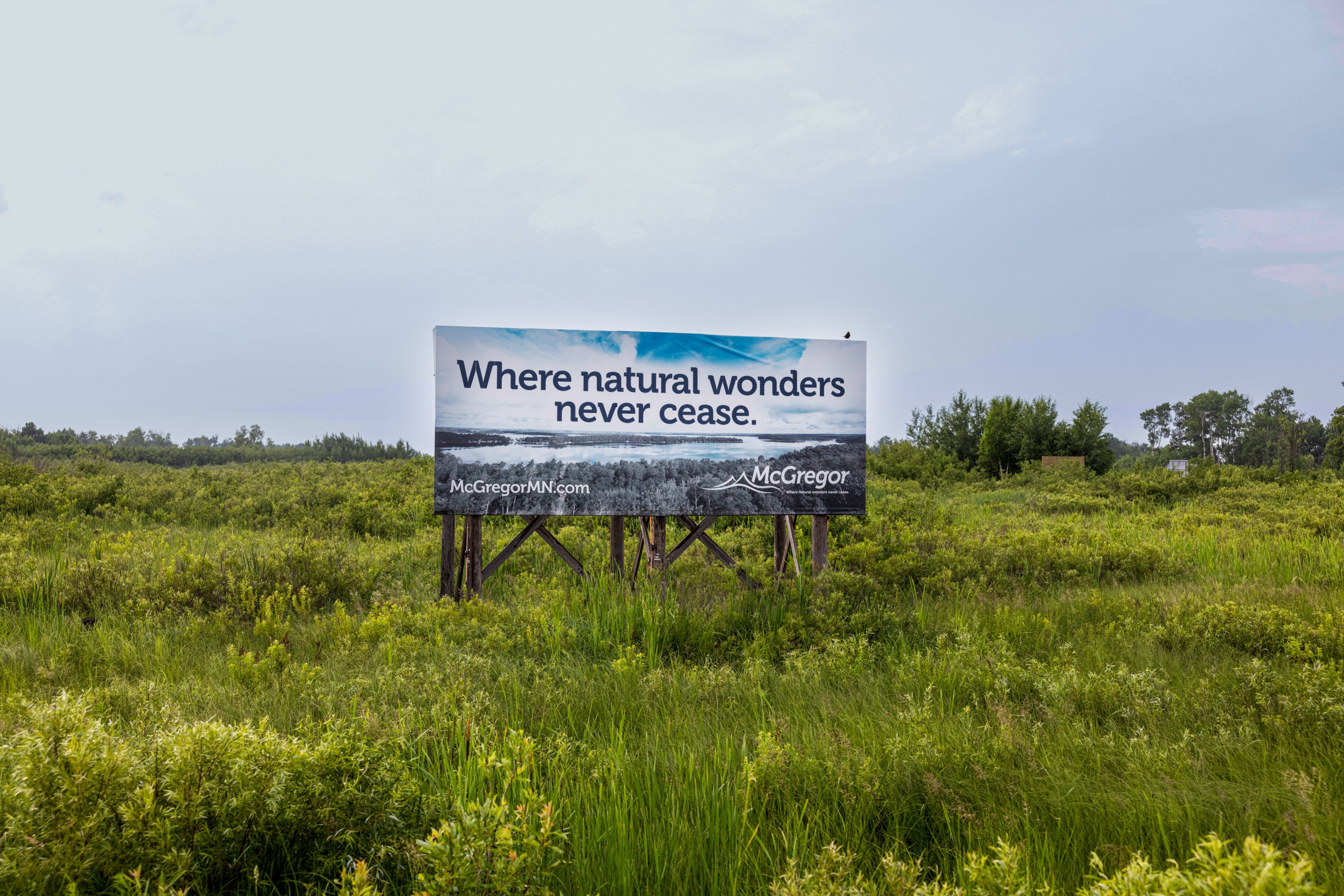 The lakes and natural resources around McGregor, another town near the proposed mine, have long attracted tourists to the area.ACKERMAN + GRUBER
The lakes and natural resources around McGregor, another town near the proposed mine, have long attracted tourists to the area.ACKERMAN + GRUBERAs we drove around the lake, Applegate explained why the rice, or manoomin, is so important to the area's tribes.
Centuries ago, the Anishinaabeg people, which include the Ojibwe, began to slowly migrate from the northeast coast to the Great Lakes. They were spurred in part by a myth or prophecy that directed them to travel west until they arrived at a place where food grows on water, according to the oral history of the related Indigenous peoples.
To this day, tribal members continue to regularly harvest, consume, and sell the manoomin that their ancestors discovered on the shallow lakes of Minnesota.
In March 2023, the Mille Lacs Band, whose ancestors arrived in eastern central Minnesota some 250 years ago, launched the Water Over Nickel campaign to highlight Indigenous concerns over Talon's proposal.

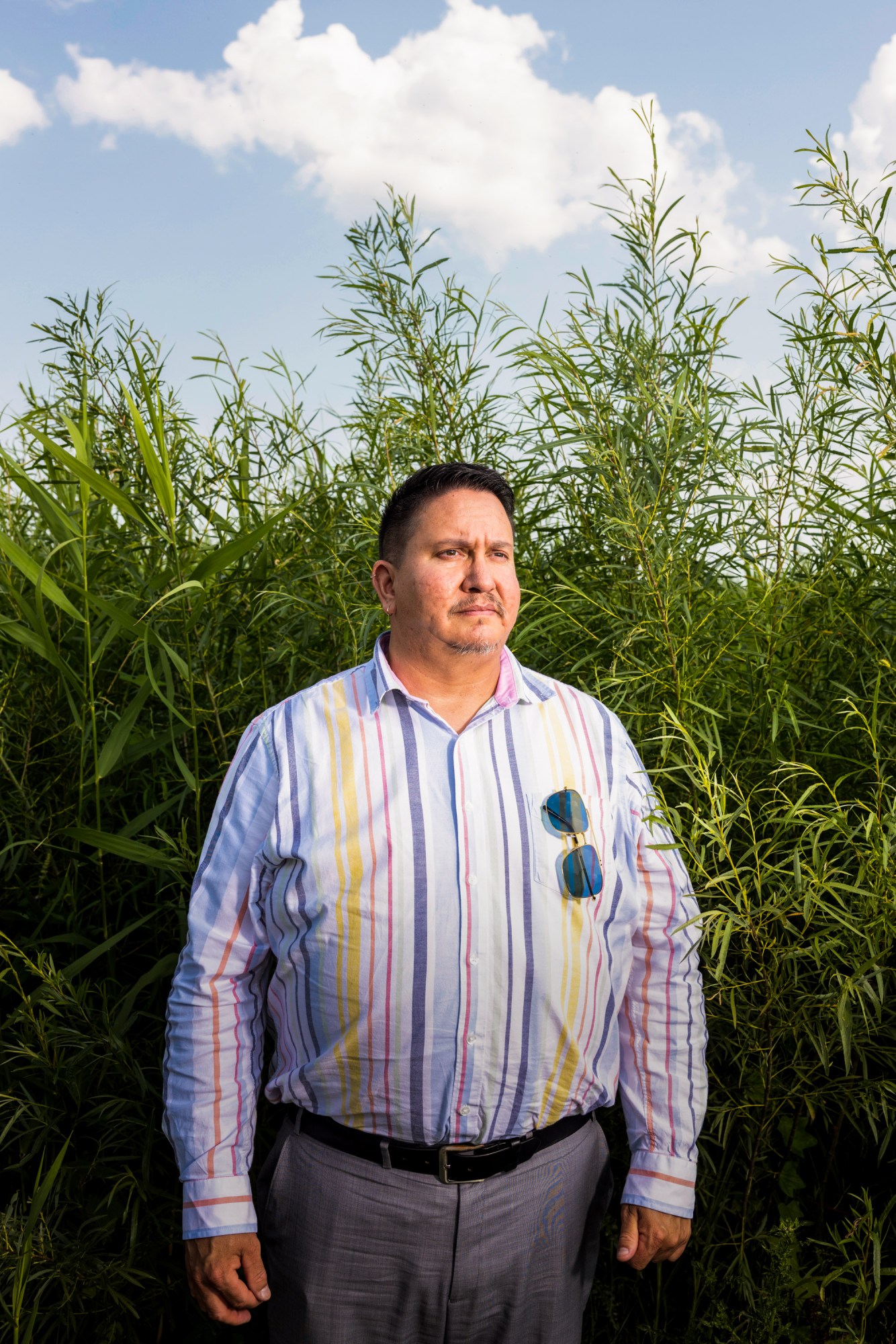
Kelly Applegate, the commissioner of natural resources for the Mille Lacs Band of Ojibwe, worries that pollution from the mine could harm the nearby plants, particularly manoomin, which local tribes have harvested, consumed, and sold for generations.
The band fears that the sulfur-rich minerals that will come out of the mine could pollute the area's water bodies and harm the plants and animals that rely upon them, either by increasing sulfate levels in lakes and streams or by producing sulfuric acid that can cause heavy metals to leach into the groundwater, a phenomenon known as acid drainage.
If the area were to get polluted from the mine," Applegate said, and we can't fish our fish, hunt our deer, pick our medicinal plants, pick our berries, harvest our manoomin, that would be one of the greatest catastrophes that ever happened to us."
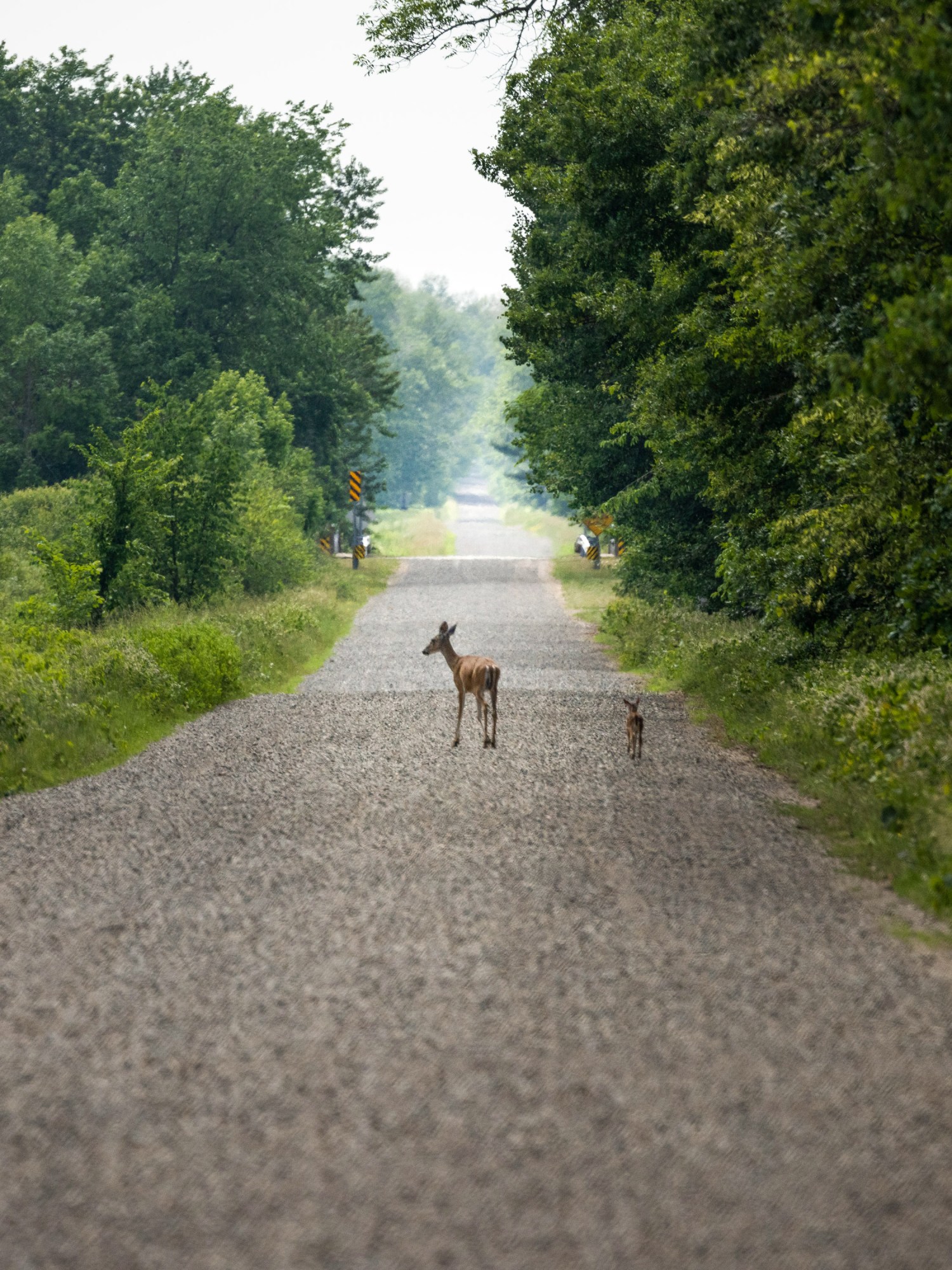 A deer and fawn walk along the road in the Rice Lake National Wildlife Refuge.ACKERMAN + GRUBER
A deer and fawn walk along the road in the Rice Lake National Wildlife Refuge.ACKERMAN + GRUBERIt is well established that certain types of mines can produce acid drainage, and both researchers and state regulators have drawn links between heightened sulfate levels and the loss of wild rice populations.
In 1973, the state mandated that sulfate levels could not exceed 10 milligrams per liter in Minnesota water bodies that can sustain wild rice, following decades of field observations that showed a drop-off in the plants in lakes with elevated levels of the chemical.
A 2017 study pinpointed the likely mechanism for this effect, noting that anaerobic microbes convert sulfate into toxic levels of sulfide in the soil." Rice growing in such sediments tend to generate smaller seeds, which produce weaker crops, fewer of which then reach the sunlight beyond the water surface, says Amy Myrbo, the lead author of the study.
It's not that it kills it outright," she says. But over a few years, it takes out the population."
While heightened sulfate levels occur naturally in lakes in certain geological settings, wastewater treatment and the weathering of certain types of mine waste can cause them as well, Myrbo says.
The net effect of sulfate on wild rice in any given water body is complicated by other variables, including iron levels, soil sandiness, water clarity, and winter temperatures. These complexities have led mining companies and trade groups to argue that the state's law isn't adequately flexible.
But critics contend the bigger problem is that the state has rarely enforced the rule at all.
Talon stresses that the company takes tribal concerns seriously, and that it's striving to limit water pollution.
In 2022, the company said it was committed to consulting with tribal communities on its plans, discussing employment opportunities for tribal members, and introducing other forms of economic benefit sharing."
Most notably, though, Talon says that early community concerns convinced the company to try to limit the potential for acid mine drainage by locating its processing site near Beulah, North Dakota, a much drier region more than 400 miles west. Each day the company intends to ship the raw ore it digs up in Minnesota to the site in dozens of covered train cars.
Malan says the company is still evaluating water treatment options for the Minnesota mine site and receiving feedback from state agencies and tribal governments through the environmental review process. But he stresses that any runoff water from the stockpile of rocks on the surface, as well as whatever is released underground, will be treated to levels that meet all federal and state requirements for produced water before it is discharged," and then rigorously monitored to ensure compliance.
We are trying to do more in terms of respecting the concerns of tribal governments," Malan says. Our hope is we can agree that we can protect the environment and get this vital material out of the ground."
But Water Over Nickel and other environmental groups it's partnered with have said that moving the processing to North Dakota doesn't do enough to limit the risks of water pollution, arguing that mine waste and mineral dust could spill out near the mine or along the rail route.
Toward the end of our conversation, I asked Applegate how he squares the need to protect the local environment and Indigenous rights with the need to address the dangers of climate change.
We also look to a future where our dependence upon fossil fuels is reduced and getting closer to carbon-free consumption," he said. But what we're asking is: Has all the research been done? And can we do better at focusing on other, new technologies that create less environmental degradation?"
Our environment is not a playground"Other community members have raised concerns about air pollution from the mine's vents, noise and rattling from the mining explosions, and disruptions from the heavy trucks that might clutter the roads.
Our environment is not a playground for you to experiment with," said Lynn Anderson during the Jackson's Hole meeting. This is Mother Earth. It's a sacred being-and we come here to rest and relax and rejuvenate with our families."
In the fall of 2021, Anderson and her husband, Tom, formed the Tamarack Water Alliance to highlight what they describe as the dangers of the mine.
I met them at their Bee House" on Round Lake, a converted barn once used to build and repair bee boxes for more than 100 hives on the homestead, which has been in Tom's family since the late 1890s. Bee colonies continue to inhabit the site and intimidate visiting reporters.
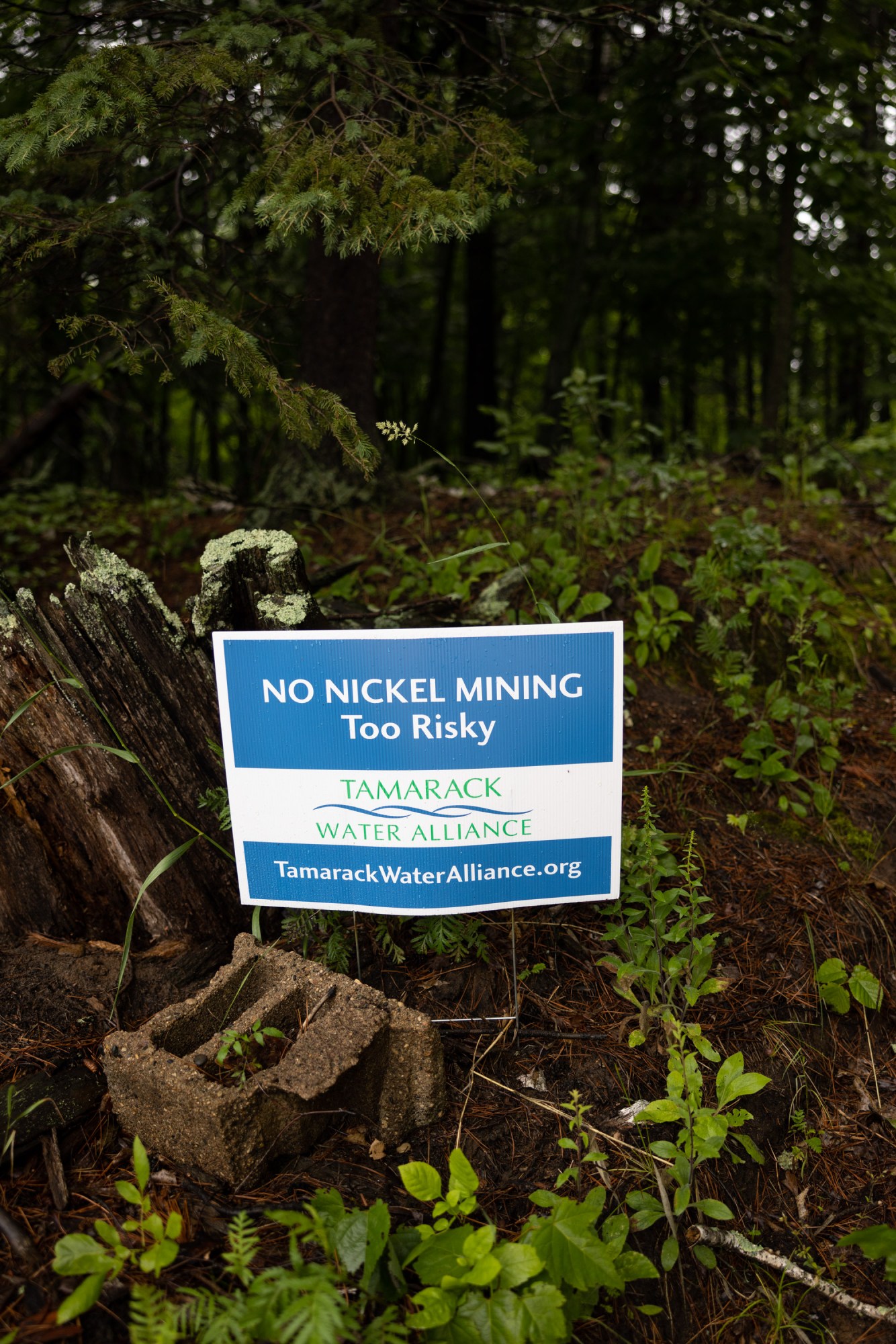
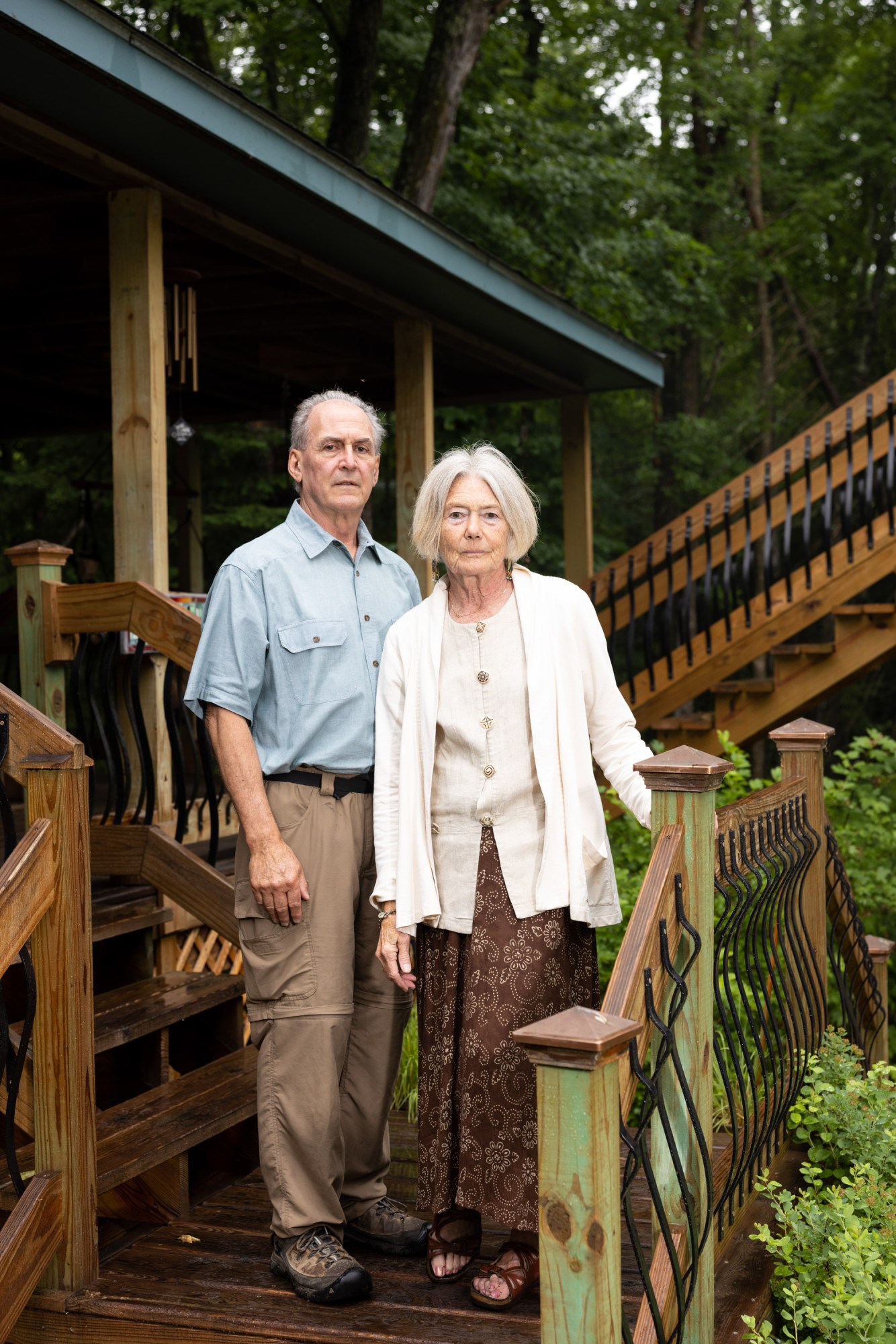
Tom and Lynn Anderson created the Tamarack Water Alliance to raise concerns about Talon's project and encourage local residents to oppose it.
That day, Lynn Anderson argued that Talon's green pledges simply don't align with the past practices of Rio Tinto, the quieter co-owner of the project. The mining giant, which has corporate offices in London and Melbourne, has been ensnared in numerous scandals throughout its history. In recent years, the company has faced allegations of bribery and harsh criticism over the destruction of 46,000-year-old Aboriginal rock shelters. (In addition to its 49% ownership stake in the Tamarack mine site, Rio Tinto owns 6% of Talon.)
The couple spend the coldest winter months in their apartment in Superior, Wisconsin. But during their time in Minnesota, they have been knocking on the doors of the cabins around the area, posting fliers at local businesses, giving talks to the lake associations, appealing to politicians, and setting up tables at the Aitkin County Fair and other regional events.
They've also been sending out monthly newsletters, writing op-eds, and coordinating with other groups raising concerns, including WaterLegacy and the Minnesota Center for Environmental Advocacy. These legal organizations have previously worked on successful efforts to at least delay mining plans in other parts of Minnesota, including the Twin Metals and NorthMet projects.
Like other opponents of the mine, the Andersons say they recognize the need to address climate change. They just don't believe that developing a nickel mine on the edge of their town is necessary to make the switch from gas-guzzlers to EVs, arguing that the world can obtain the necessary metals by recycling more and shifting to different battery chemistries. They own a Tesla Model 3 with a nickel-free lithium iron phosphate (LFP) battery, a point they raise repeatedly in interviews and community meetings.
But recycling can likely provide only a fraction of the metals needed for the clean-energy transition. And despite claims of recent progress in non-nickel chemistries, battery and materials experts largely do expect the EV industry will need the added energy density of nickel for some time to come.
Talon's Malan says the Andersons are just wrong" about the ongoing need for nickel.
We have a binding agreement with Tesla," he says. Tesla is at the forefront of building their own batteries. The battery manufacturing that they have in California and in Texas is all nickel-based battery chemistry."
Tesla didn't respond to an inquiry from MIT Technology Review.
An economic boomThe critical voices have been the loudest in the community meetings, but there's clearly wide support for the project in the area as well.
Talon says the project will create about 300 union jobs when it reaches full production, on top of almost 100 employees already working in or near Tamarack. It also expects to infuse the region's coffers with nearly $110 million, through mineral royalties and taxes paid to the state, local governments, and the area's school district.
Aitkin County itself is depressed as far as employment, and this will mean more jobs for this area of the county," says J. John Cyrus, Tamarack's mayor. The majority of the people in this area are for it. They want the mining to get started and have well-paying jobs from it."
Some of the sharpest local tensions are forming between the area's permanent and seasonal residents.
In an op-ed in the Duluth News Tribune in February, Zerek Marsyla, then owner of the Ukura's Big Dollar grocery store in nearby McGregor, argued that most year-round residents" in the county support the project or are willing to keep an open mind and participate in Minnesota's public environmental-review process."
But no changes will satisfy anti-mining activists," he wrote.
Not even with the urgency of building out our domestic supply chains, nor the needs of the Aitkin County community for good jobs that keep people in the region, nor even Talon's earnest efforts to address concerns," Marsyla added.

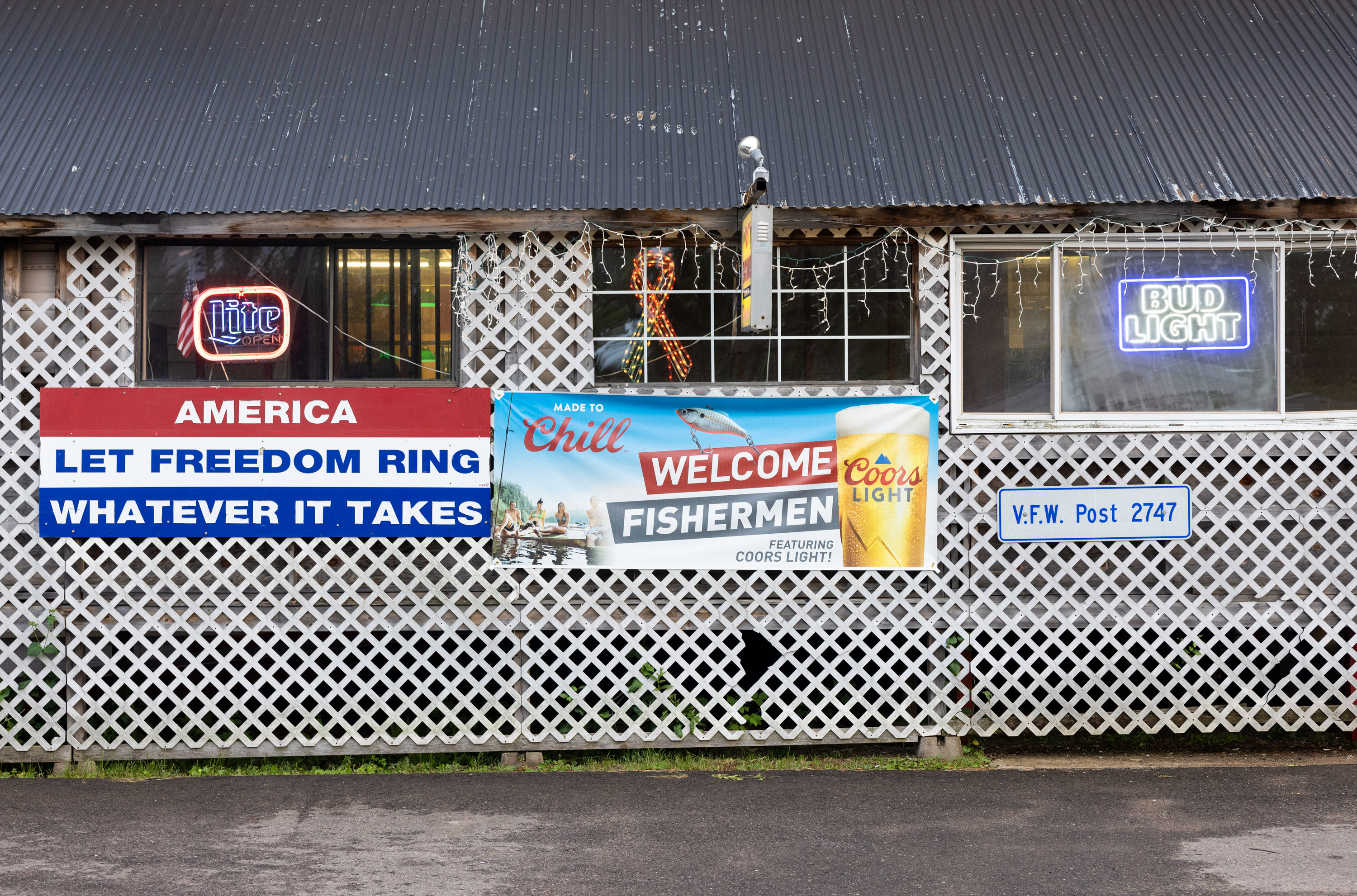

Supporters of Talon's project hope that it will help revitalize the region, bringing more jobs, money, and families.
During an interview, he said the year-rounders want the economic growth that the Talon project will bring, along with the chance to draw new families to the area. He chalks up the opposition to overwrought concerns about water quality and lakefront property values.
The people who are against it are lake people,'" Marsyla says. Snowbirds that fly south for the winter."
But not all lake people are opposed. Pat Murphy, the president of the Aitkin County Lakes and Rivers Association, lives on the shores of Long Lake, about a 30-minute drive from Tamarack. He has invited both the Andersons and representatives from Talon to speak to his group's members. Personally, he's in favor of the project, so long as Talon commits to do this right."
But while he believes the couple has helped push the company to take environmental issues more seriously, he also says they're overstating the risks of water pollution and indulging in scare tactics."
On top of the economic benefits to the county, Murphy believes the project will help ensure that US industries have secure supplies of the materials needed to compete in the global marketplace.
So the people here would really benefit by it," he says. And the people of the United States would benefit by it."
Talon insists that it is attempting to pioneer more responsible and sustainable ways of mining. Malan stresses that the company has held its door open to critics from early on, changed its proposal on the basis of community feedback, and laid out detailed plans for limiting pollution.
In the end, the company claims it will produce nickel that is independently certified as carbon neutral, producing no more climate pollution than the company is able to balance out through other means.
To achieve that, the company plans to rely on renewable power and electric vehicles as much as possible, plant and maintain trees, and explore a variety of efforts to remove planet-warming carbon dioxide from the atmosphere and store it away.
Most notably, it's identified a use for the mine waste left over after the ore is processed in North Dakota. Talon is working with several startups to explore emerging processes that utilize these so-called mine tailings to trap and store carbon dioxide in rock formations, accelerating the natural process by which certain minerals combine with and lock up the greenhouse gas. The materials could then be buried or used as material in cement.
We must keep true to basic values of community engagement, environmental justice, and environmental integrity. And we can."
Talon and Rio Tinto have also secured Department of Energy funding to study the possibility of storing hundreds of millions of tons of carbon dioxide in a large deposit of olivine at the Tamarack site, where the reactive green mineral may safely and permanently stock away the carbon in stable rock.
We are, across the board, rethinking a lot of different things," Malan says.
But it remains to be seen how well these efforts to cancel out the operation's climate footprint will work. Researchers are still evaluating the potential of these technologies, the carbon removal efforts are all exploratory, and accreditations of carbon neutrality aren't always credible. Talon also hasn't made any such formal commitments to state regulators. In the Environmental Assessment Worksheet submitted to the Minnesota Department of Natural Resources, the company only states that the net emissions from the mine would be small."
Getting it rightThe fundamental challenge is that the world simply won't replace its fossil-fuel-based infrastructure and meet the energy, food, health, and transportation needs of a growing global population if it doesn't dig upa whole lot more metal.
Mineral demand just for electric vehicles and battery storage will leap tenfold by 2040 as a result of energy and climate policies already in place, according to the International Energy Agency.
But almost every US mining proposal runs into the sort of stiff community opposition that Talon faces. Native tribes, environmental groups, and NIMBYs have pushed back on or filed lawsuits against lithium-mining projects from Nevada to North Carolina.
There are often if not always valid and virtuous reasons for such opposition. But collectively, halting or slowing down most proposals to mine or refine the minerals needed for EVs, wind turbines, and solar panels will stall the shift from a hydrocarbon-based economy to a mineral-based one. That risks locking in more warming and starker dangers, particularly for people in the poorest and hottest parts of the world.
Jay Turner, a professor of environmental studies at Wellesley College and author of Charged: A History of Batteries and Lessons for a Clean Energy Future, says that the world will need to increase mining to achieve our daunting climate goals. He also argues that the US has a responsibility to extract more of those materials domestically, both because its citizens consume a disproportionate share of the goods they go into and because companies operating in the nation are generally required to abide by relatively higher labor, community, and environmental standards.
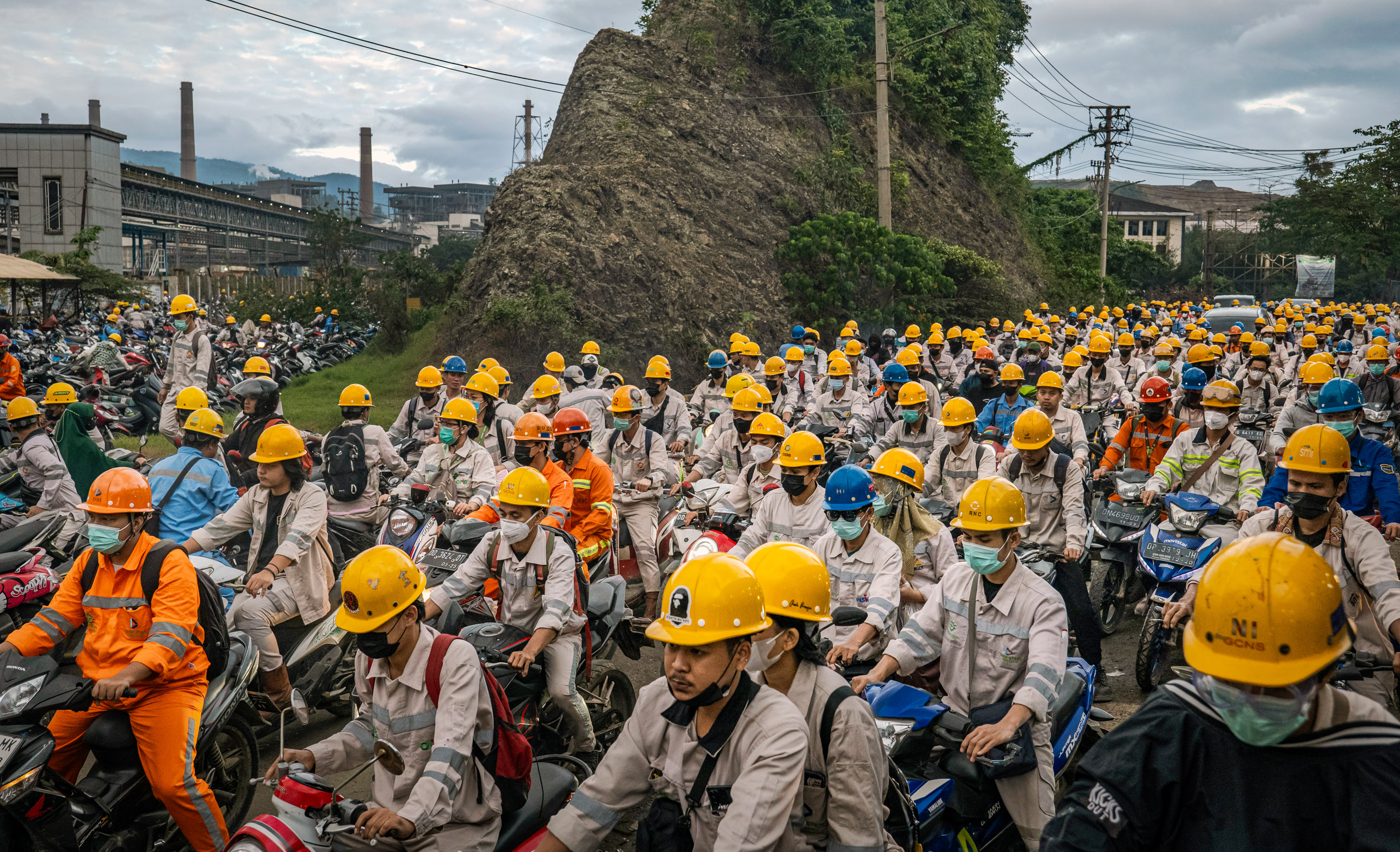 Employees commute to or from a nickel-processing site in Sulawesi, Indonesia.ULET IFANSASTI/GETTY IMAGES
Employees commute to or from a nickel-processing site in Sulawesi, Indonesia.ULET IFANSASTI/GETTY IMAGESIf mining companies don't increase operations in places like Minnesota, the industry may simply extract more in the Congo, Nigeria, or Indonesia, where such projects may inflict greater environmental damage with fewer protections for communities and workers.
But, Turner says, what the nation can and should do is demand more from the mining industry in exchange for the chance to profit from its cache of minerals and the generous incentives the federal government has unleashed. He says that regulators should require the sector to operate transparently during the planning stages, engage openly with the community throughout the process, and provide meaningful benefits, including jobs, training, infrastructure investments, and other social services.
There are some pristine places where we simply shouldn't mine, but we also can't afford to allow every critic to stop a clean-energy project in its tracks, says David Hayes, formerly the deputy secretary at the US Department of the Interior and now a lecturer in law at Stanford University.
Regulators, communities, and companies will all need to alter their past behaviors and strive to achieve better, fairer balances between the inevitable benefits and harms of such proposals.
We absolutely need to be focused on a national strategy of rapid decarbonization," he says. On the other hand, we must keep true to basic values of community engagement, environmental justice, and environmental integrity. And we can do both."
That's easier to say in the abstract, though, than on the ground in a place like Tamarack, where one side claims to be solving climate change and the other accuses it of committing green colonialism.
Opponents like Tom Anderson profess confidence that they'll be able to stop the project, given the environmental risks, the coalition of opponents, and the challenges that other mine proposals have faced in the state. He also notes there's a ticking clock on the Tesla contract: the EV company can terminate the deal if the mine hasn't achieved commercial production by 2027.
But the odds still appear strong that it'll happen eventually, given the project's perfect alignment with the nation's stated economic and energy objectives. In addition, some two-thirds of Minnesota residents said in a 2022 industry-sponsored survey that mining for rare metals that are critical to the clean energy transition should be mined in-state rather than imported from other countries."
Still, the mining industry in America stands at a precarious point. It may just have a fresh shot to make over its image, thanks to the surging demand for these raw materials. But that puts the onus on companies like Talon to prove that they really will operate in more responsible ways.
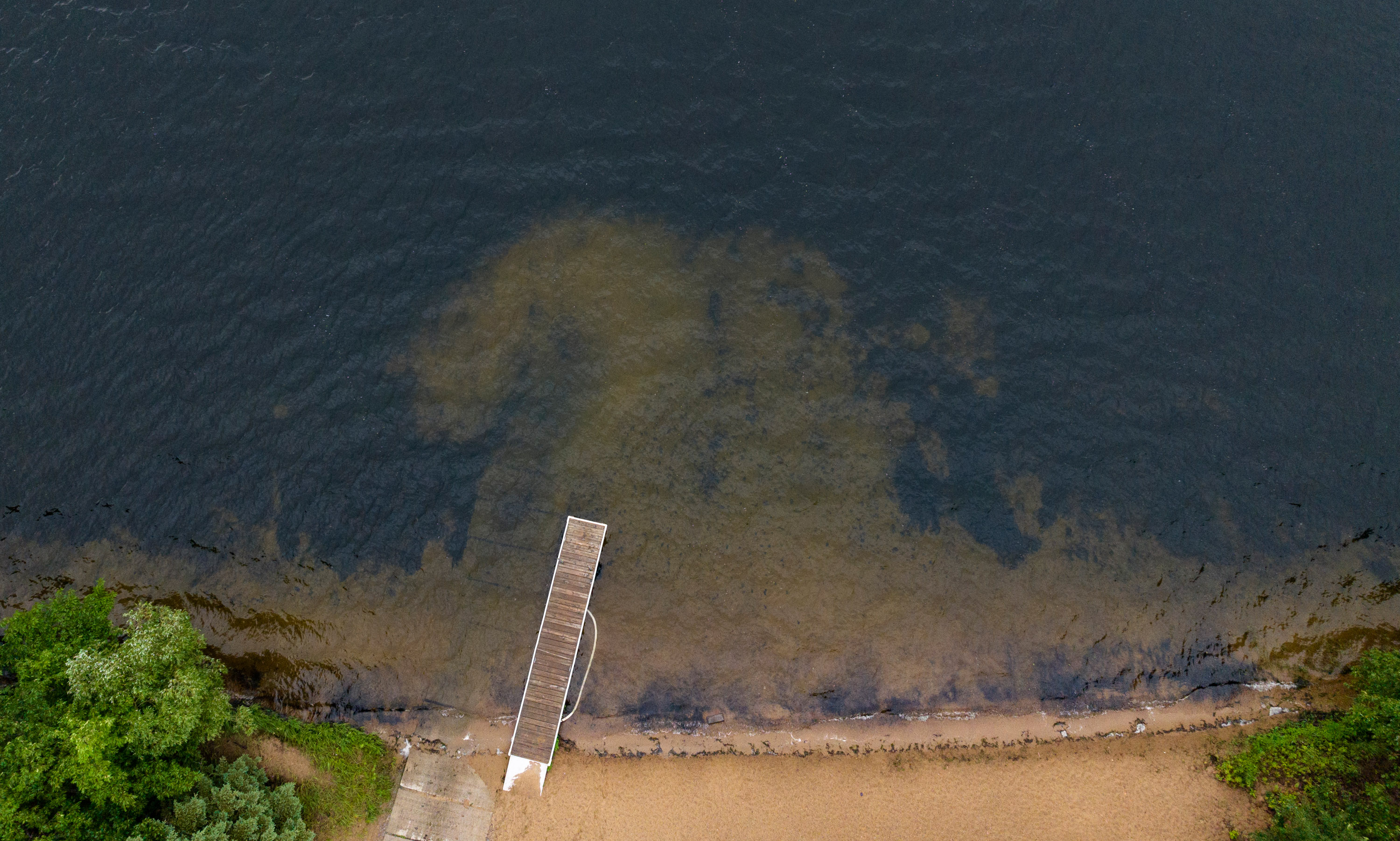 Some area residents allege that opposition to the mine is driven by seasonal lake people." But Pat Murphy, the president of the Aitkin County Lakes and Rivers Association, is personally in favor of the project, so long as Talon commits to do this right." ACKERMAN + GRUBER
Some area residents allege that opposition to the mine is driven by seasonal lake people." But Pat Murphy, the president of the Aitkin County Lakes and Rivers Association, is personally in favor of the project, so long as Talon commits to do this right." ACKERMAN + GRUBERMurphy, the leader of the lakes association, believes that the company intends to-not out of the goodness of any executive's heart, but because it's clearly in Talon's economic self-interest. Mining companies will have to operate in cleaner ways than the sector has in the past if they hope to earn back and hold onto the social license necessary to expand in America today.
They know that if they get this right, they'll probably be able to mine more metals in other areas of Minnesota and other states," he says. But if they screw it up and there's a big problem for the environment, it could be disastrous for all mining efforts."